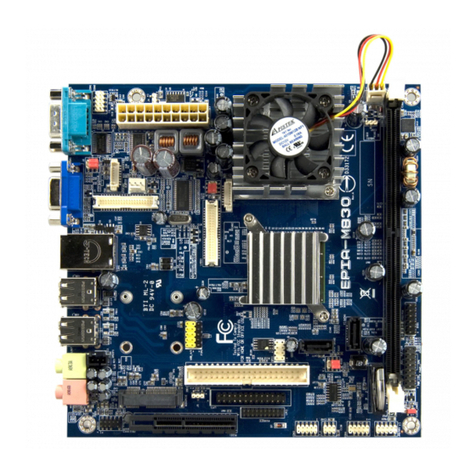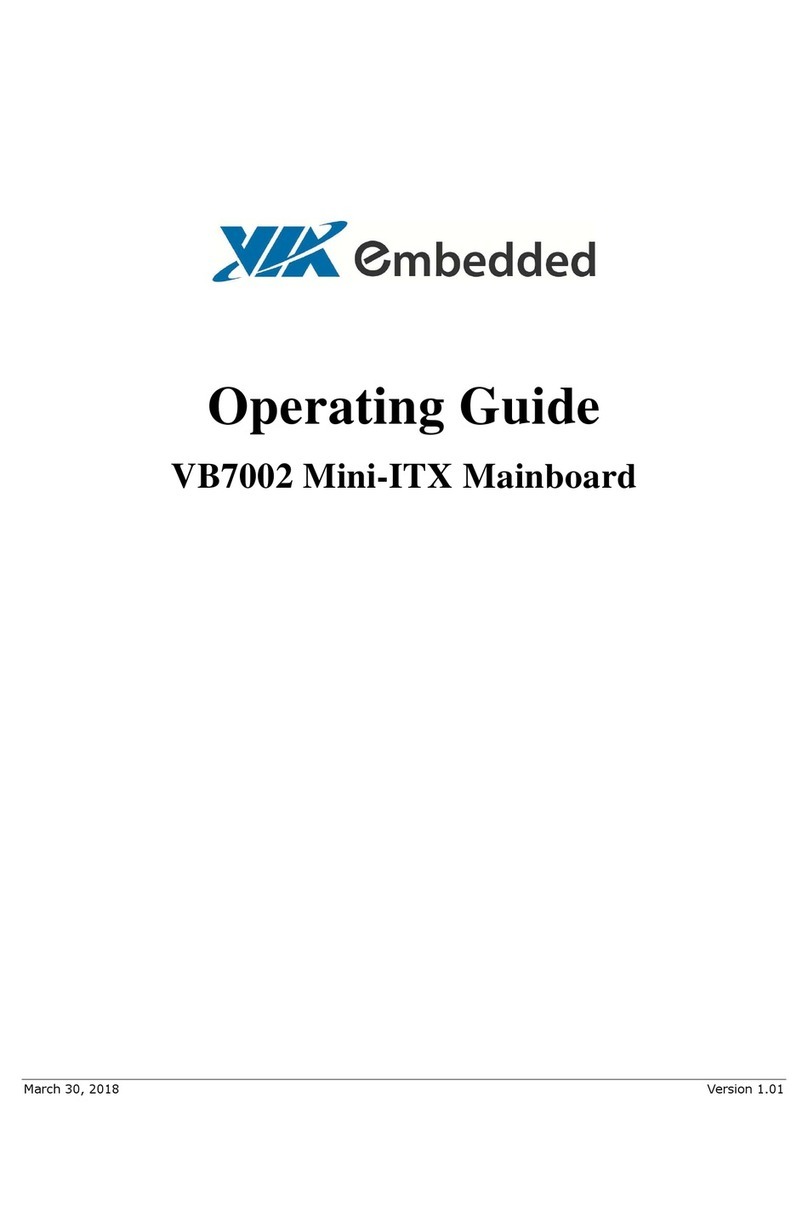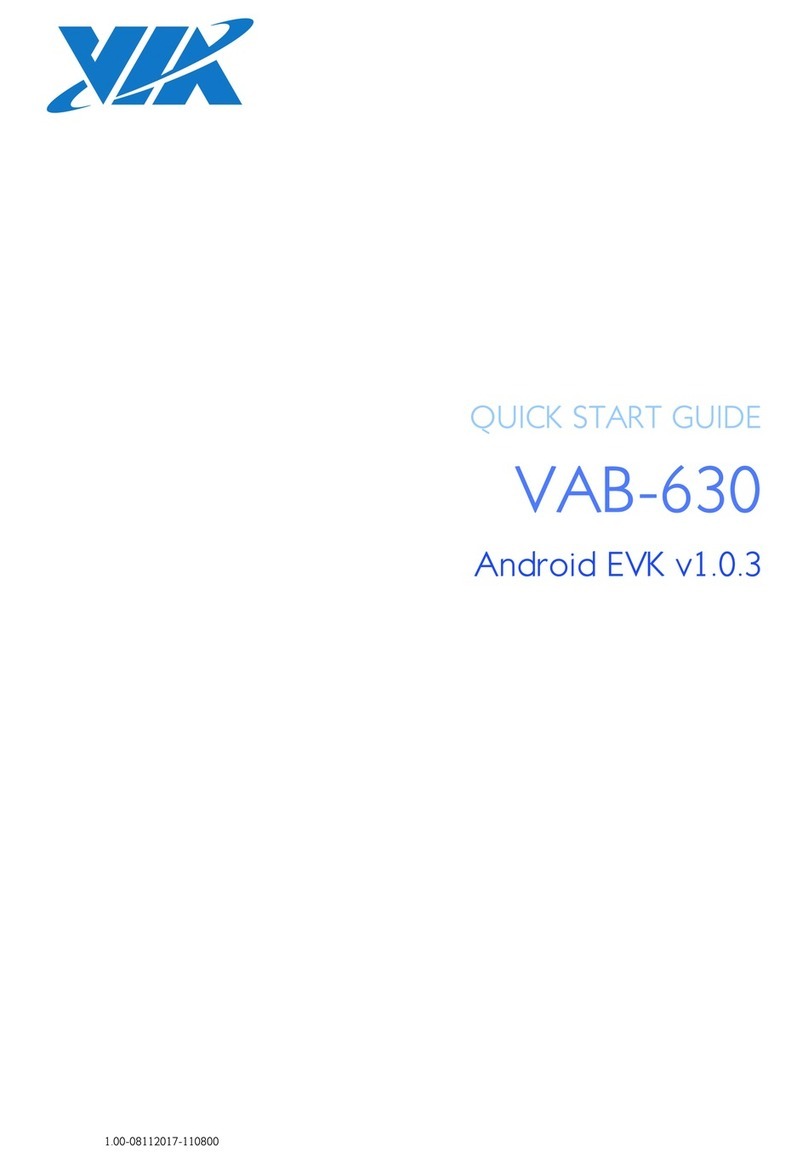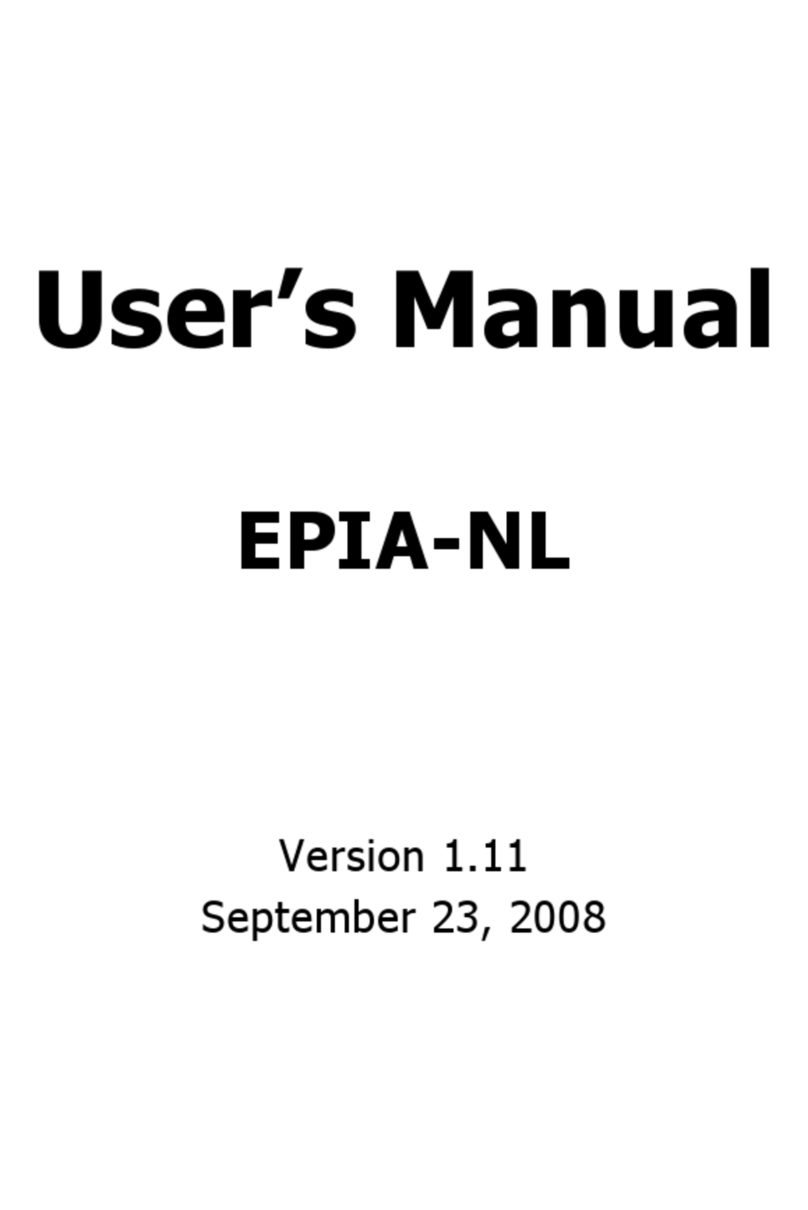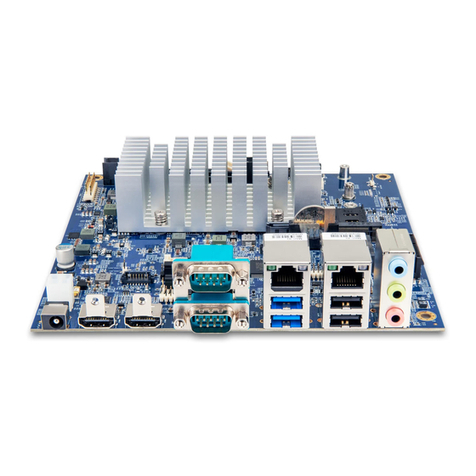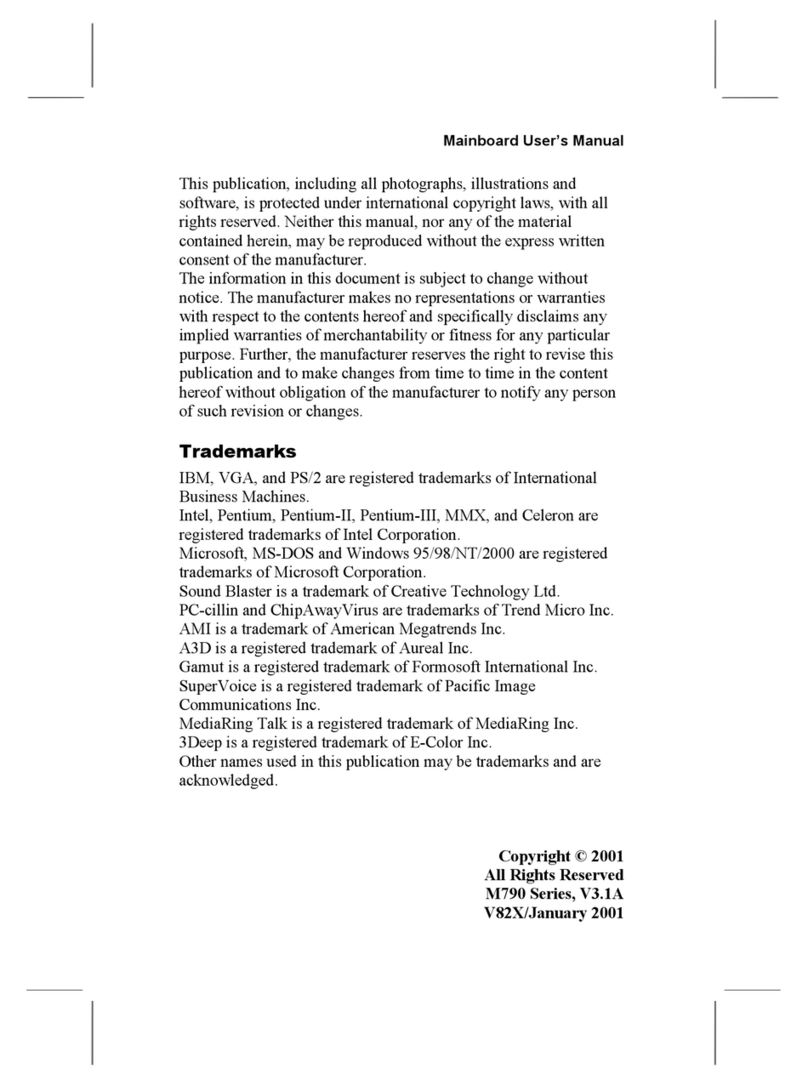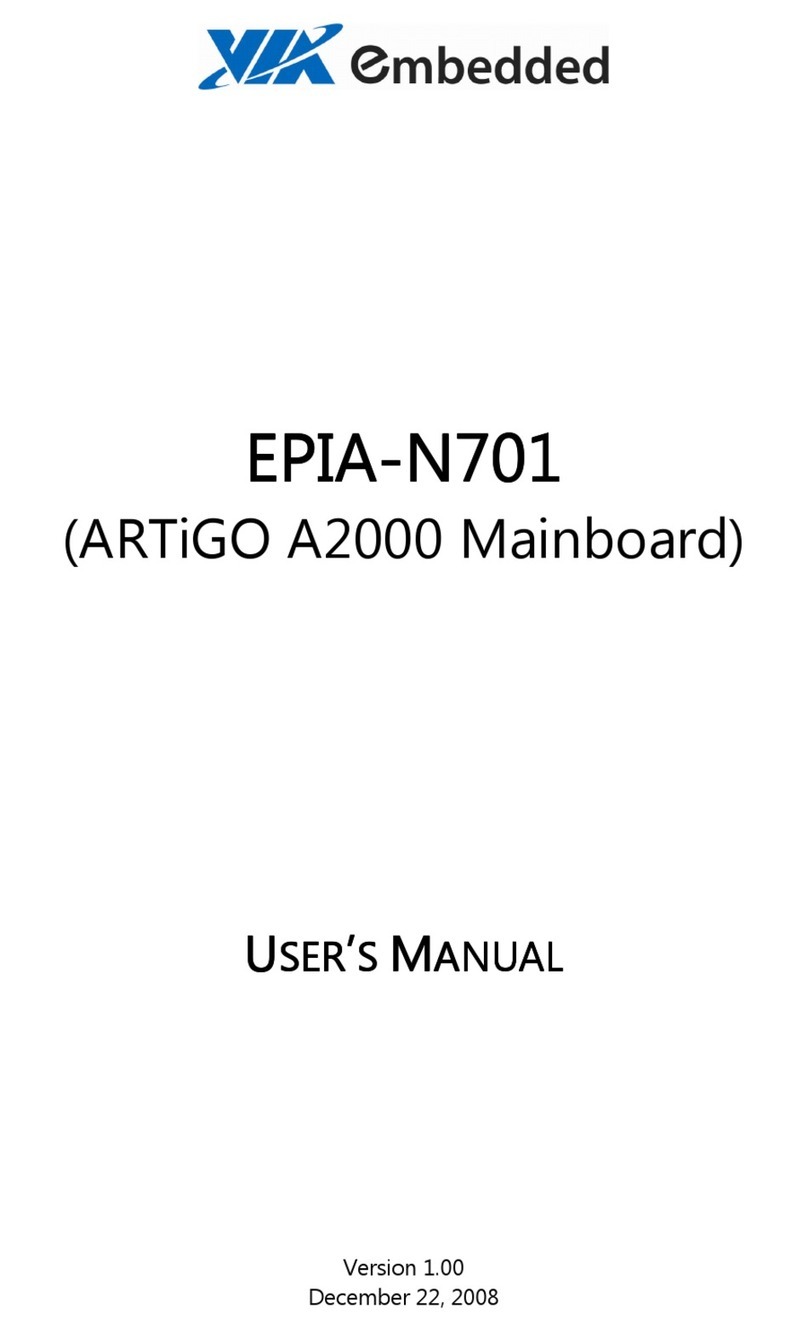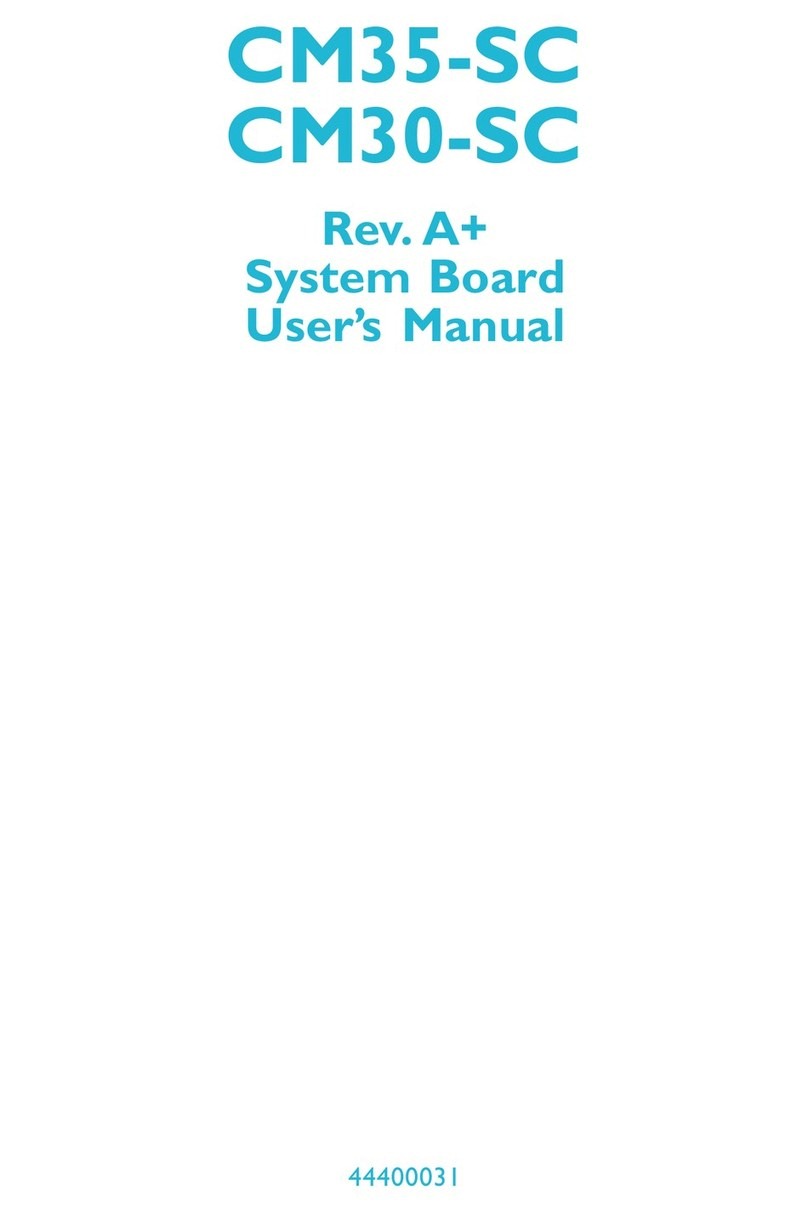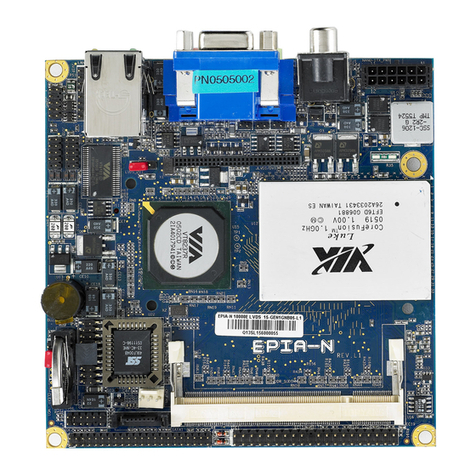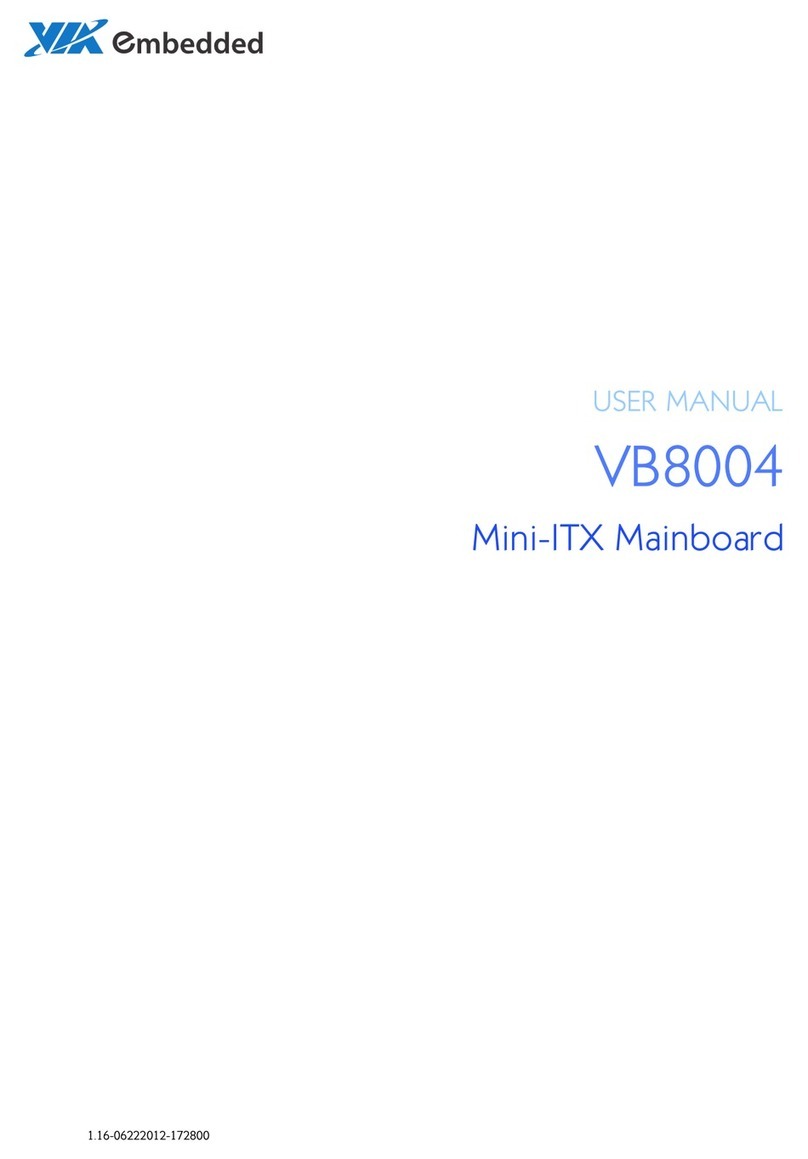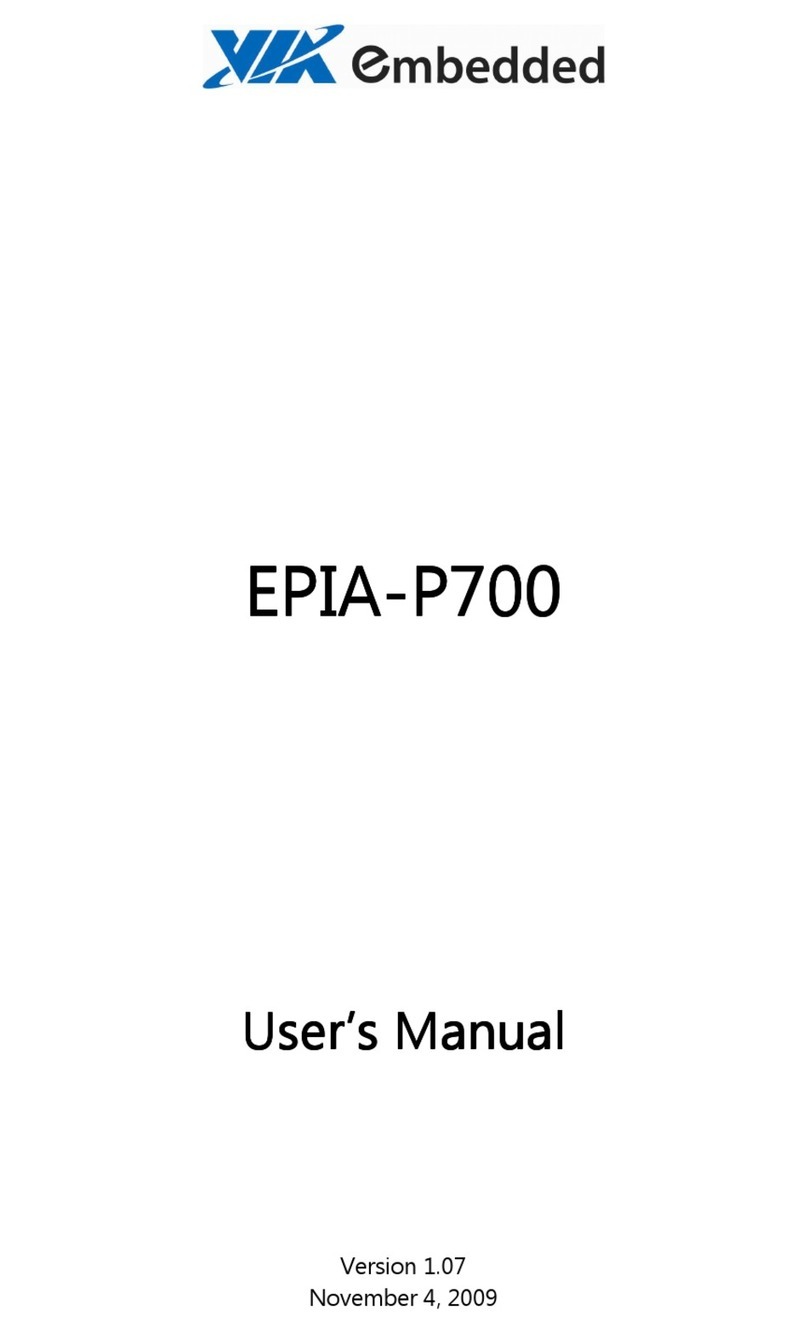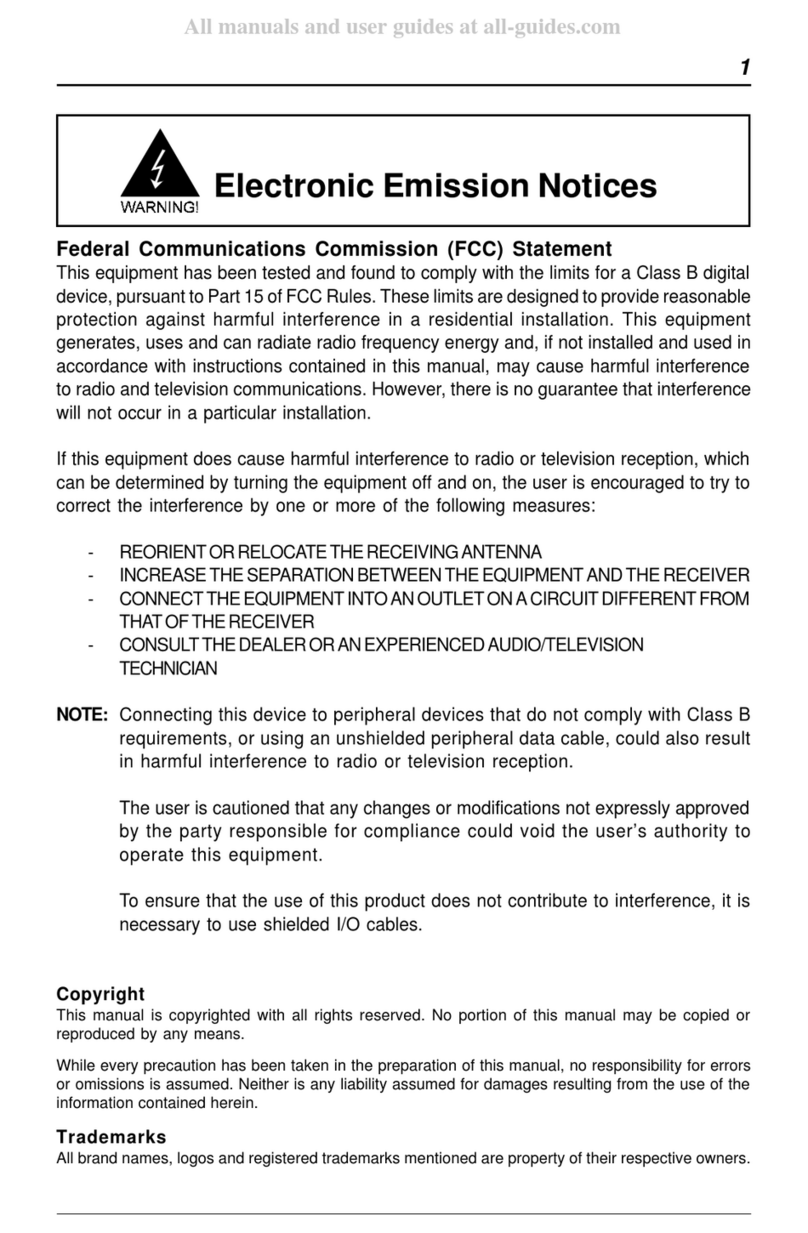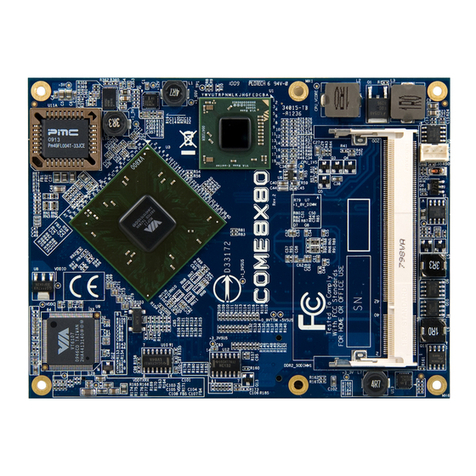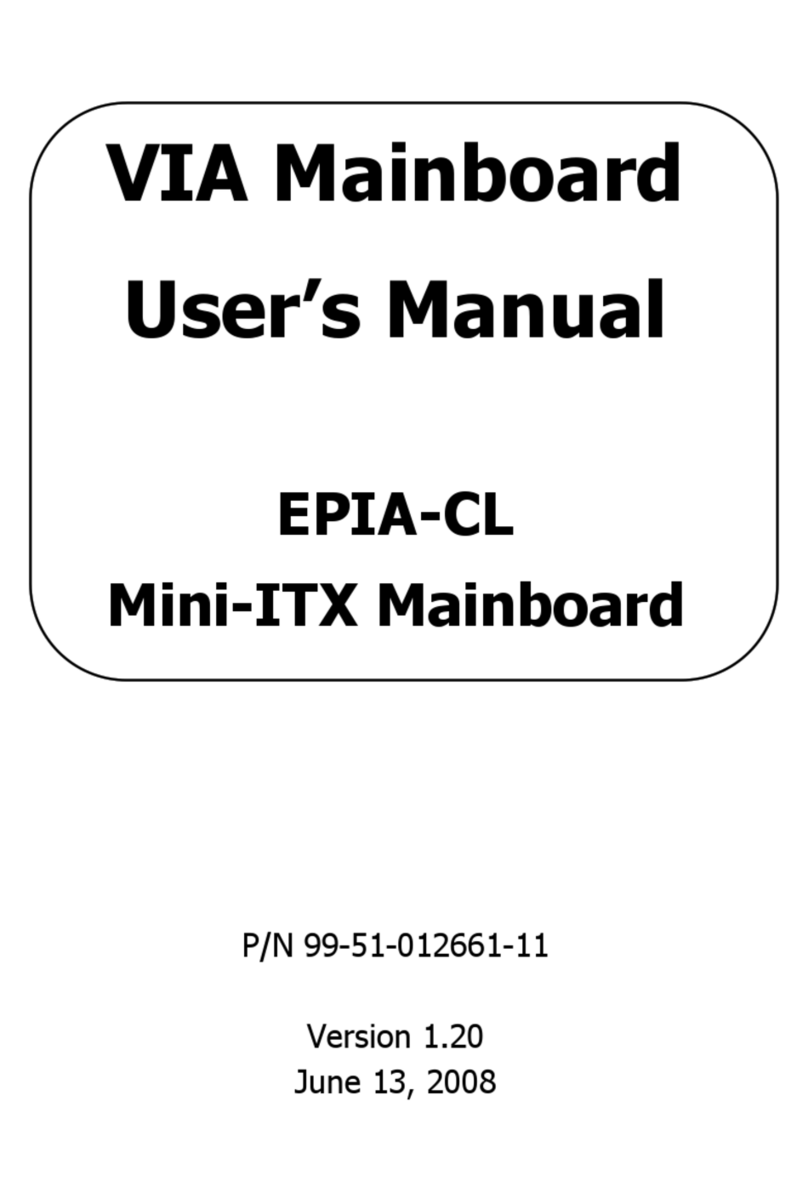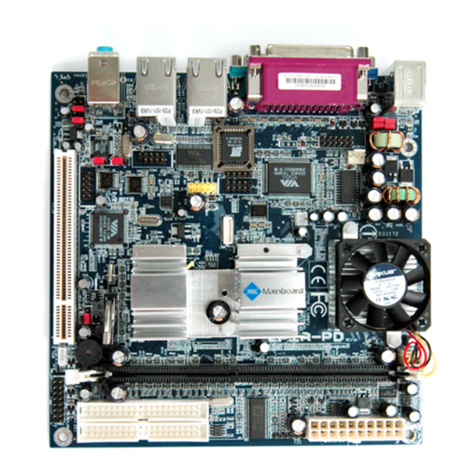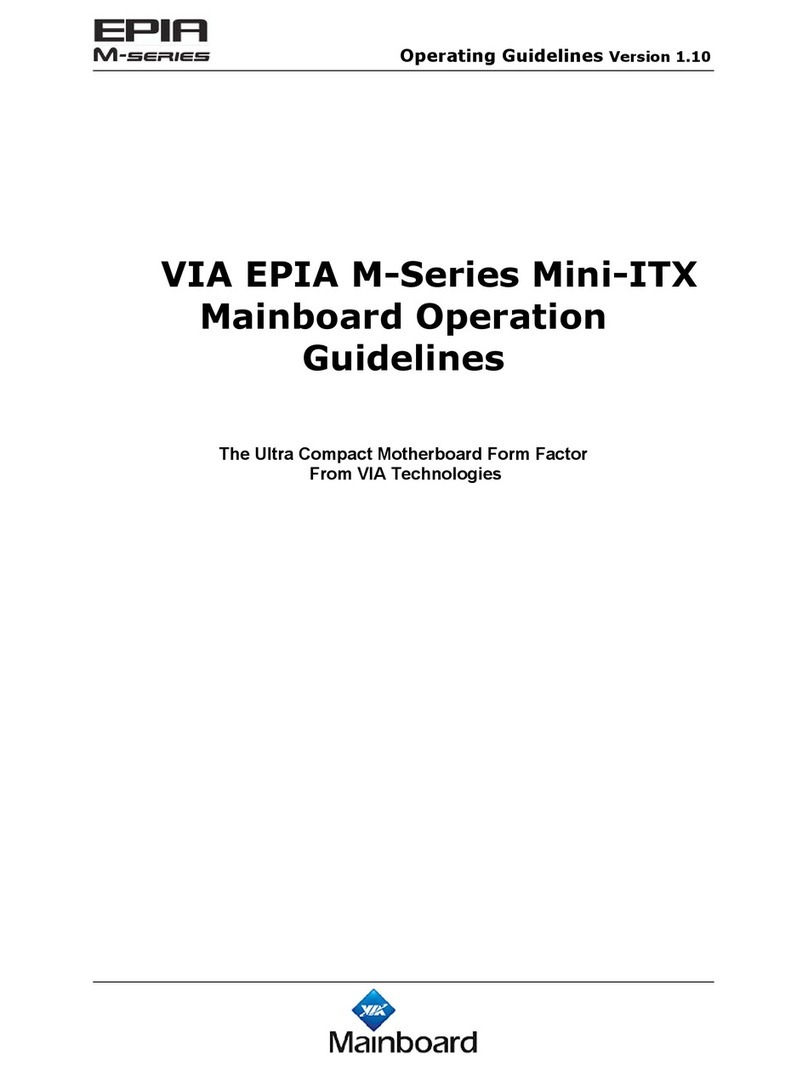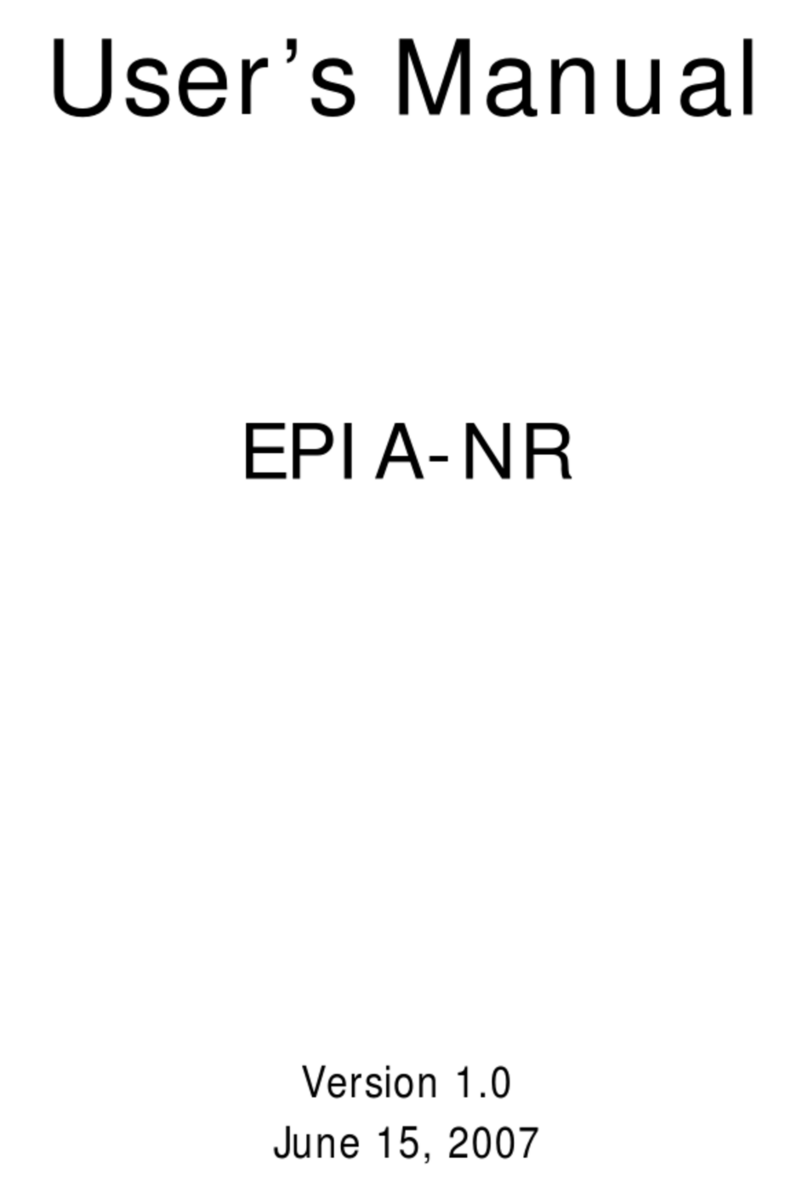
1
Introduction
5
Lesen Sie Diese Anleitung Zuerst Durch
Auf dieser Seite ist eine Zusammenfassung aller Hinweise enthalten, die vor der
Benutzung der Systemplatine unbedingt beachtet werden müssen.
1. Prozessor
Die Frequenzrate von einige, Prozessoren konnte vielleicht von Hersteller
gesperrt sein. Wenn Sie diese Art von Prozessor benutzen, wird das
eingeben eine erweiterte Rate für den Prozessor keine Wirkung haben.
Das System wird stattdessen den Standard Fabrikrate benutzen.
Die Frequenzrate von Prozessoren, welche größer als 8x sind, sind von
Hersteller gesperrt, und werden nicht länger die erweiterten Raten
Flexibilität haben. Das System wird stattdessen den Standard Fabrikrate
benutzen.
Ein Auswählen eines Bus-Taktgebers, welcher von den Frequenzen 66MHz,
100MHz oder 133MHz abweicht, kann eine Unstabilität des Prozessors
oder des Systems verursachen. Eine bessere Betriebsleistung des Systems
kann durch eine solche Einstellung nicht gewährleistet werden.
2. Systemspeicher - Die Systemplatine unterstützt die VCM- sowie die PC-
SDRAM-DIMMs. Falls mehr als ein DIMM verwendet wird, darf nur derselbe
Typ der DIMMs in die DIMM-Steckfassungen eingesetzt werden, da andere
DIMM-Typen (VCM oder PC SDRAM) zu Konflikten führen können.
3. 5VSB-Stromversorgung - Falls Sie die (1) Wake-On-LAN- und/oder (2)
Wake-On-Ring-Funktionen (internes Modem) anwenden, unterstützt die 5VSB-
Stromquelle Ihres Netzgerätes eine Leistung von ≥720 mA. Falls Sie die
Suspendieren-auf-RAM-Funktion, unterstützt die 5VSB-Stromquelle Ihres
Netzgerätes eine Leistung von ≥1A.
4. Treiber - Das System muß nach jedem Installieren eines Treibers neugestartet
werden. Probleme werden nur dann auftreten, wenn das System nach dem
Installieren aller Treiber neugestartet wird.
Leer Me Primero
Esta pagina contiene informationes importantes que se deben prestar mucha
attention antes del uso de la tabla de sistema
1. Procesador
La proporción de frecuencia de algunos procesadores de arriba uede
que ha sido bloqueada por el fabricante. Si usted está utilizando esta
clase de procesador, configurando la ración para el procesador no
tendrá efecto. El sistema en vez utilizará la proporción implícita de la
fábrica.
La ración de frecuencia de los procesadores mayor que 8x ha sido
bloquada por el fabricante y ya no tendrá la flexibilidad de utilizar las
proporciones extendidas. El sistema utiliza su proporción implícita de la
fábrica.
Seleccionando un reloj de bus externo otro que 66MHz, 100MHz o
133MHz puede resultar la inestabilidad del procesador o del sistema y
no son garantizados para proveer una mejor ejecución de sistema.
2. Memoria de Sistema - El tabla del sistema suporta ambos, el VCM y el PC
SDRAM DIMMs. Si usted está utilizando más que un DIMM, asegura de
insertar el mismo tipo de DIMM dentro del encaje de DIMM. Utilizando
diferentes tipos (VCM o PC SDRAM) de DIMM puede causar problemas.
3. 5VSB Potencia - Si estas usando las funciones de (1) Wake-On-LAN y/o
si se esta usando el (2) Wake-On-Ring (que es el modem interno), el 5VSB
potencia debe soportar una corrient (>) mas grande que ≥720mA. Si estas
usando las funciones de Suspender a RAM, el 5VSB potencia debe soportar
una corrient (>) mas grande que ≥1A.
4. Drivers - Asegurese de reboot o rebootear el sistema cada vez que se
instala un nuevo Driver. Problemas suelen ocurrir si se rebootea solo una
vez despuez de haber terminado con las instalacionens de todos los drivers.
Deutsch
Español

